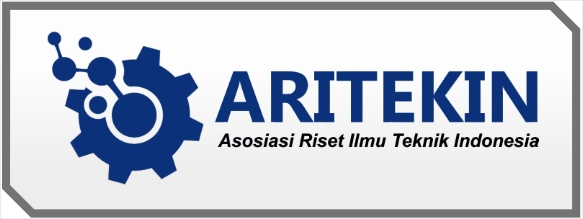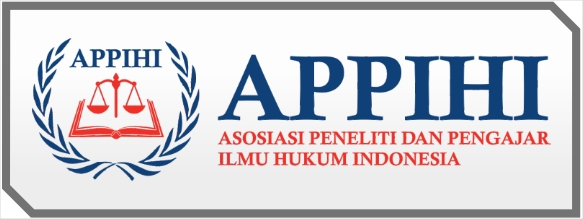Pengembangan Layanan Perpustakaan Daerah Kabupaten Semarang Berdasarkan Preferensi Masyarakat
DOI:
https://doi.org/10.55606/sinov.v6i1.806Keywords:
Service development, regional libraries, user preferencesAbstract
The Semarang Regency Regional Library has been supporting its users to increase their knowledge and knowledge informally. In order to continue to improve the reach and quality of its services, research needs to be carried out as a reference for developing Regional Library services so that they can be in line with the needs of users. This research aims to identify efforts that need to be made by the Semarang Regency Regional Library to develop its services based on the preferences of the library community as users of library services. This research was carried out using qualitative methods by extracting data from observations and surveys using purposive sampling by distributing open questionnaires to readers as respondents. The results of the research show that library services are very useful for respondents (60.0%), especially to increase knowledge (25.77%), reduce stress and mental pressure (22.70%), and help complete school or college assignments (21, 47%). The weakness of service at the Regional Library that was most felt by respondents was "the small number and variety of books" (42.37%). Locations for service development based on respondents' choice were Ambarawa (30.21%), West Ungaran (16.67%), Bandungan (13.54%), and Bawen (11.46%). The conclusion of this research is that the Semarang Regency Regional Library service must continue to be developed because it has provided benefits for readers which are realized through increasing the quantity and quality of books, digitizing collections, expanding and repairing buildings which is balanced with the addition of adequate indoor facilities as well as suggestions regarding further development locations. to pay attention to ease of accessibility for the community, especially ease of transportation access to the location.
Downloads
References
Arms, W. Y. (2001). Digital libraries. MIT press.
Cigarini, A., Bonhoure, I., Vicens, J., & Perelló, J. (2021). Public libraries embrace citizen science: Strengths and challenges. Library & Information Science Research, 43(2), 101090.
Cortés, Y. (2021). Spatial accessibility to local public services in an unequal place: An Analysis from patterns of residential segregation in the Metropolitan Area of Santiago, Chile. Sustainability, 13(2), 442.
Jaeger, P. T., Bertot, J. C., & Subramaniam, M. (2013). Preparing future librarians to effectively serve their communities. The Library Quarterly, 83(3), 243-248.
Keisling, B. L & Sproles, C. (2017). Reviewing and Reforming Library Service Points: Lessons in Review and Planning Services, Building Layout, and Organizational Culture. Library Management, 38 (8/9), 426-436.
Kumajas, L., Langie, J., & Mokoagouw, S. (2024). Preferensi Masyarakat Indonesia Dalam Penggunaan Uang. Manajemen Dan Kewirausahaan, 5(1), 31-44. https://doi.org/10.53682/mk.v5i1.8672.
Leorke, D., Wyatt, D., & McQuire, S. (2018). More than just a library”: Public libraries in the ‘smart city. City, culture and society, 15, 37-44.
Macfarlane, G. S., Stucki, E., Redelfs, A. H., & Spruance, L. A. (2022). Beyond Proximity: Utility-Based Access from Location-Based Services Data. International Journal of Environmental Research and Public Health, 19(19), 12352.
Mitchell, E., & Seiden, P. (2015). The library self-study process.
Mutawali, A., Alamsyah, S., & Saputra, U. N. (2023). The Effect of Digitizing Library Services and Facilities on User Satisfaction. International Journal of Economics (IJEC), 2(2), 202-210.
Ngcobo, J. B. (2020). Knowledge sharing practices in public libraries: a case study of eThekwini municipal libraries (EML) (Doctoral dissertation).
Nurrohimah I., & Fatimah I. S. (2022). Persepsi dan Preferensi Masyarakat terhadap Tingkat Kenyamanan Taman Merdeka Metro sebagai Ruang Interaksi Sosial di Masa Pandemi Covid-19. Jurnal Lanskap Indonesia, 14(1), 8-15. https://doi.org/10.29244/jli.v14i1.37680.
Ottensmann, J. R. (1994). Evaluating equity in service delivery in library branches. Journal of Urban Affairs, 16(2), 109-123.
Pemerintah Republik Indonesia. Peraturan Pemerintah Nomor 24 Tahun 2014 tentang Pelaksanaan Undang-Undang Nomor 43 Tahun 2007 tentang Perpustakaan.
Real, B., Bertot, JC. & Jaeger, P.T. (2014). Rural Public Libraries and Digital Inclusion: Issues and Challenges. Information Technology and Libraries, 33 (1), 6-24.
Schloffel‐Armstrong, S., Baker, T., & Kearns, R. A. (2021). Geographies of the public library: Institutions, architectures,interactions. Geography Compass, 15(10), e12592.
Swist, T., Hendery, R., Magee, L., Ensor, J., Sherman, J., Budge, K., & Humphry, J. (2022). Co-creating public library futures: An emergent manifesto and participatory research agenda. Journal of the Australian Library and Information Association, 71(1), 71-88.
Wilson, A. (1972). The Public Library in the Service of Leisure. Journal of librarianship, 4(4), 222-239.
Wojciechowska, M. (2020). Social capital, trust and social activity among librarians: Results of research conducted in 20 countries across the world. Library & Information Science Research, 42(4), 101049.
Downloads
Published
How to Cite
Issue
Section
License
Copyright (c) 2024 Media Informasi Penelitian Kabupaten Semarang

This work is licensed under a Creative Commons Attribution-ShareAlike 4.0 International License.


















